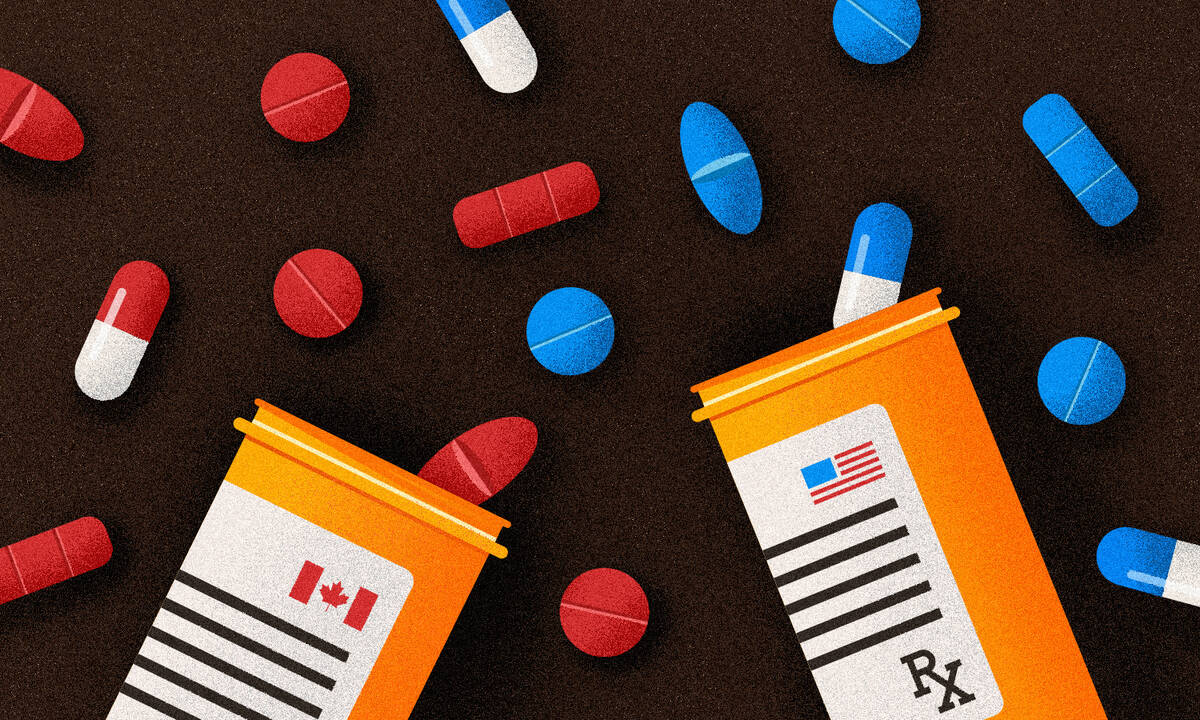For evidence of how much Canadians love their healthcare system, look at the results of a Canadian Broadcasting Corporation contest to name the “Greatest Canadian.” Voters passed over telephone inventor Alexander Graham Bell, hockey great Wayne Gretzky, and popular former Prime Minister Pierre Trudeau. Instead, they chose Tommy Douglas, former Saskatchewan Premier.
Why Douglas? Because he introduced Medicare to his province in 1961, laying the groundwork for Canada’s current federal single-payer healthcare system.
That system—wherein the government manages and pays for all basic healthcare—remains quite popular among Canadians today: 74 percent rate the care they receive as very good or excellent.
The idea of a single-payer system has gained growing popularity in the U.S., too, especially as multiple Democratic presidential hopefuls have touted their plan for some version of “Medicare for All.” “The idea is that everyone has government-provided insurance, and you can’t buy your way out of it,” says Craig Garthwaite, Kellogg associate professor of strategy.
In particular, proponents often argue that a single-payer system could help bring down healthcare costs, which have ballooned in recent years to a whopping $3.5 trillion (18 percent of GDP) in the U.S., compared with just $253 billion (11 percent of GDP) in Canada.
Why? Since governments in single-payer countries are the primary purchaser of healthcare services—the Canadian government is responsible for 69 percent of health spending in Canada, for instance—those countries should have a great deal of “buyer power.” That means they should theoretically be able to effectively set prices to keep healthcare costs in check—and that the U.S. could do the same with a single-payer system. “There’s this belief that it’s going to lead to big savings when the government uses its large buyer power,” Garthwaite explains.
But is that really the case?
“It may be easy to say, ‘single payer can bring all these savings by reducing wages or pharma costs,’” says Jillian Chown, assistant professor of management and organizations at Kellogg. “But we have to know if that’s actually true.”
So Chown, Garthwaite, Kellogg strategy professor David Dranove, and Kellogg research assistant Jordan Keener designed a study to shed more light on the issue. They used an economic model to analyze why current costs of labor and drugs—two of the largest categories of healthcare expenditure—are lower in Canada than in the U.S. They then considered whether the U.S. could expect similar savings under a hypothetical “Medicare for All” system.
The authors found that when it came to pharmaceuticals, the Canadian government was indeed exploiting its status as sole buyer to keep prices down. Canada’s cheaper healthcare labor, on the other hand, was largely the result of normal price differences between countries.
The study shows that a single-payer system in the U.S. could potentially lower costs of both personnel and pharmaceuticals. But because of important differences between the two countries—the average salary for skilled workers, as well as the size of their healthcare markets—these savings may ultimately compromise quality of care for Americans in ways they don’t in Canada. That is, lowering healthcare workers’ wages could create incentives for workers to avoid those fields, while suppressing U.S. pharmaceutical prices would dangerously curtail the industry’s motivation to innovate.
“If you think we’re going to spend less and get the same care,” Garthwaite says, “the evidence doesn’t support that.”
Single Payer and the Cost of Healthcare in Canada
The bulk of America’s hefty healthcare spending goes not to administrative costs or insurance, but to the cost of providing care. “Healthcare costs are about 60 percent people,” Dranove says, while pharmaceuticals represent another 15 percent.
But Canada spends significantly less than the U.S. on both healthcare labor and drugs. “We wanted to know how much of those differences are actually the result of a strategic decision by the Canadian single payer to exercise its buyer power and how much results from other factors that differ between the countries,” Garthwaite says.
The collaborators built a theoretical model to simulate the supply and prices of labor and prescription medication in a single-payer system. Core to the model is the assumption that a buyer’s ability to control costs depends largely on the size of the healthcare market, as well as the “elasticity” of the supply in question. That is, if healthcare-worker pay or drug prices go down, is there somewhere else that those people or drugs can fetch a higher price?
The model led the authors to make several predictions about when the Canadian government would choose to push down prices and when it would not.
“It may be easy to say, ‘Single payer can bring all these savings by reducing wages or pharma costs. But we have to know if that’s actually true.”
— Jillian Chown
First, when it comes to labor, the model predicted, single-payer governments can only suppress wages so much. For unskilled workers, that’s because they are likely to have other, similar-paying employment options they could turn to if wages dropped too far—orderlies, for example, could easily transition into retail or manufacturing. So if wages fell too far, hospitals could face a shortage of these workers.
Skilled workers, on the other hand, like doctors and nurses, tend to be more locked into their specialized career paths. However, Dranove says, pushing healthcare wages too low could keep talented students from ever entering medicine in the first place. Although medicine is a calling for some, who would likely still enter the field if wages were lower, Dranove says that there is also “no doubt that the demand for medical education goes down as the expected financial returns go down.”
The authors say that it is possible (though not guaranteed) that this would compromise the quality of care by populating hospitals with the “good and semi-bright rather than the best and brightest,” explains Dranove.
Governments presumably want to avoid reducing the quality of care in this way. Thus, the researchers expected that Canada, despite its greater buyer power, should only have modestly lower labor costs than the privately insured U.S.
On the pharmaceutical side, the researchers predicted that whether or not a government chose to use its heft to suppress drug prices should depend on the size of the market. The logic is that if a major drug-buying country puts downward pressure on pharma prices, it could have a large effect on drug companies’ bottom line, which could have negative consequences down the road.
“There are a lot of drugs that never pan out,” Chown says, “and the companies need to recoup the costs of developing those so they can continue to invest in innovation.”
Thus, larger countries have an incentive not to lower drug prices too far, lest they deter pharma companies from developing new products, which could eventually harm their own citizens. But since a small country will only account for a tiny fraction of drug companies’ profits, it has much more freedom to lower drug prices without deterring pharmaceutical innovation.
So the researchers predicted that Canada—which accounts for just 2.8 percent of global pharmaceutical spending—should be able to push down prices quite a bit without much ill effect. (The U.S., by contrast, accounts for 36.9 percent of spending.)
“If Canada says they’re going to pay half of what the U.S. does for a drug, manufacturers are still going to sell there,” says Dranove, since the marginal costs of drugs (the cost required to produce additional pills once a company has already figured out the formula) are generally quite low.
The researchers then used real data on the prices of drugs and labor to determine whether these predictions were indeed borne out in Canada—and, in turn, whether implementing a single-payer system in the U.S. might have a similar effect.
Does “Medicare for All” Really Reduce Healthcare Costs?
Overall, the researchers found that Canadian healthcare workers made 26 percent less, on average, than their U.S. counterparts.
But the model showed the discrepancy can be largely explained by the generally lower compensation across all highly skilled career fields in Canada, rather than Canada’s single-payer system and accompanying buyer power per se. “Canadians simply don’t make as much as Americans,” Dranove says.
“On average, Canadian doctors make less than U.S. doctors to the same degree that Canadian lawyers make less than U.S. lawyers,” Garthwaite explains. “That suggests the lower healthcare wages are not a strategic decision from the Canadian government but instead the result of broader economic factors.”
The authors expect that a single-payer system in the U.S. would face similar limitations. “If you lower U.S. healthcare wages to Canadian levels, people might find higher-paying careers like banking and law more attractive than becoming a surgeon,” says Chown.
“Canada can afford to exercise buyer power for drugs because it has much less negative impact than for healthcare wages.”
— Craig Garthwaite
When it came to drugs, the researchers’ prediction was again correct: Canada pays much less for pharmaceuticals than the U.S. does—56 percent less, compared to only about 4 percent less for non-pharmaceutical products such as groceries—suggesting that the government was intentionally pushing prices downward. “Canada can afford to exercise buyer power for drugs because it has much less negative impact than for healthcare wages,” Garthwaite explains.
So could the U.S. expect similar savings on pharmaceuticals if it adopted “Medicare for All”? Yes, the authors say—but at a different kind of cost.
“Canada’s not afraid to lower drug prices because it doesn’t have an effect on drug supply,” Dranove says. “They’re too small a market.” However, that’s likely not the case for the U.S., where such a move could put a major dent in pharma profits, preventing many drugs from ever coming to market, as manufacturers would have less incentive to invest in innovation and development.
“If Canada lowers prices, it doesn’t affect the global market size for drugs,” says Chown. “If the U.S. does, it’s much more disruptive.”
How “Medicare for All” Would Affect Prices in America
Overall, the findings imply that a U.S. single-payer system may not drive as much cost savings as politicians and other advocates suggest, given that the price of labor—which makes up more than half of all health spending—would be difficult to tamp down without causing shortages.
Meanwhile, if the U.S. put major downward pressure on drug prices, it could compromise long-term health outcomes by reshaping the drug market.
“‘Medicare for All’ might be a workable way to expand health-insurance coverage,” Dranove says, “but if we expect it to dramatically cut into health spending without also affecting quality, we may be disappointed.”
“It’s a question of what you’re trying to optimize,” Garthwaite adds. “People have to understand there’s no free lunch here.”
However, the exact outcomes would depend on how, exactly, the U.S. implemented its “Medicare for All” program. Chown does not think it’s inevitable that such a policy would reduce the quality of care, for example, pointing out that many countries with more affordable public healthcare consistently outperform the privatized U.S. system (although the authors acknowledge that some of those disparities may result from factors beyond the healthcare system, such as diet, physical activity, and socioeconomic inequality).
“If you compare the U.S. health outcomes to other countries with single-payer systems,” says Chown, “it’s not clear that the U.S. is better off.”
Featured Faculty
Associate Professor of Management & Organizations
Walter J. McNerney Professor of Health Industry Management; Professor of Strategy
Professor of Strategy; Herman Smith Research Professor in Hospital and Health Services Management; Director of Healthcare at Kellogg
About the Writer
Sachin Waikar is a freelance writer based in Evanston, Illinois.
About the Research
Chown, Jillian, David Dranove, Craig Garthwaite, and Jordan Keener. 2019. "The Opportunities and Limitations of Monopsony Power in Healthcare." Working paper.




